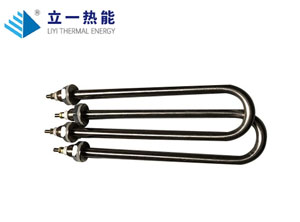Heating pipes play a crucial role in many industrial and daily life scenarios, such as industrial heating furnaces, water heaters, and other equipment that cannot be separated from them. During use, the heating tube requires regular maintenance.
From the perspective of performance assurance, as the usage time increases, impurities such as scale and oil may accumulate on the surface of the heating tube. Taking the heating tube in a water heater as an example, calcium and magnesium ions in the water will form scale on the surface of the heating tube. These scales will reduce the thermal conductivity efficiency of the heating tube, as the thermal conductivity of scale is much lower than that of metal heating tubes. Originally, heat could be quickly transferred to the heated medium, but the presence of scale acts as a layer of insulation, requiring the heating tube to consume more electrical energy to reach the set temperature. This not only wastes energy but also prolongs the heating time. If not cleaned for a long time, the temperature inside the heating tube will be too high, which will affect its service life.

Regular maintenance of the heating tube is also crucial in terms of safety. When there are too many impurities on the surface of the heating tube, it may cause local overheating. For some heating tubes used in flammable environments, local overheating may become a fire hazard. Moreover, in some corrosive environments, the casing of the heating tube may be corroded. If regular inspections are not carried out, once the shell is corroded and perforated, the heating wires and other components inside the heating tube will be exposed, which can easily cause electrical faults such as short circuits and even pose a threat to the user's personal safety.
Regular maintenance of heating tubes can also detect potential faults and hidden dangers in advance. For example, during the inspection process, it is possible to observe whether the connection part of the heating tube is loose. If the connection part is loose, it will cause an increase in contact resistance, resulting in excessive heat generation and oxidation, burning, and other situations at the connection part. In addition, through regular maintenance, it is also possible to check whether the insulation performance of the heating tube has decreased. If the insulation performance deteriorates, there may be a risk of leakage.
There are various methods to maintain heating tubes. For surface scale, specialized descaling agents can be used for cleaning. For impurities such as oil stains, suitable organic solvents can be used to wipe them off. Meanwhile, during the inspection process, it is necessary to carefully examine the appearance of the heating tube for any damage or deformation, and use professional tools to test whether its insulation resistance and other parameters meet the requirements.
In short, heating tubes require regular maintenance during use, which is a key measure to ensure their performance, safety, and extend their service life.



